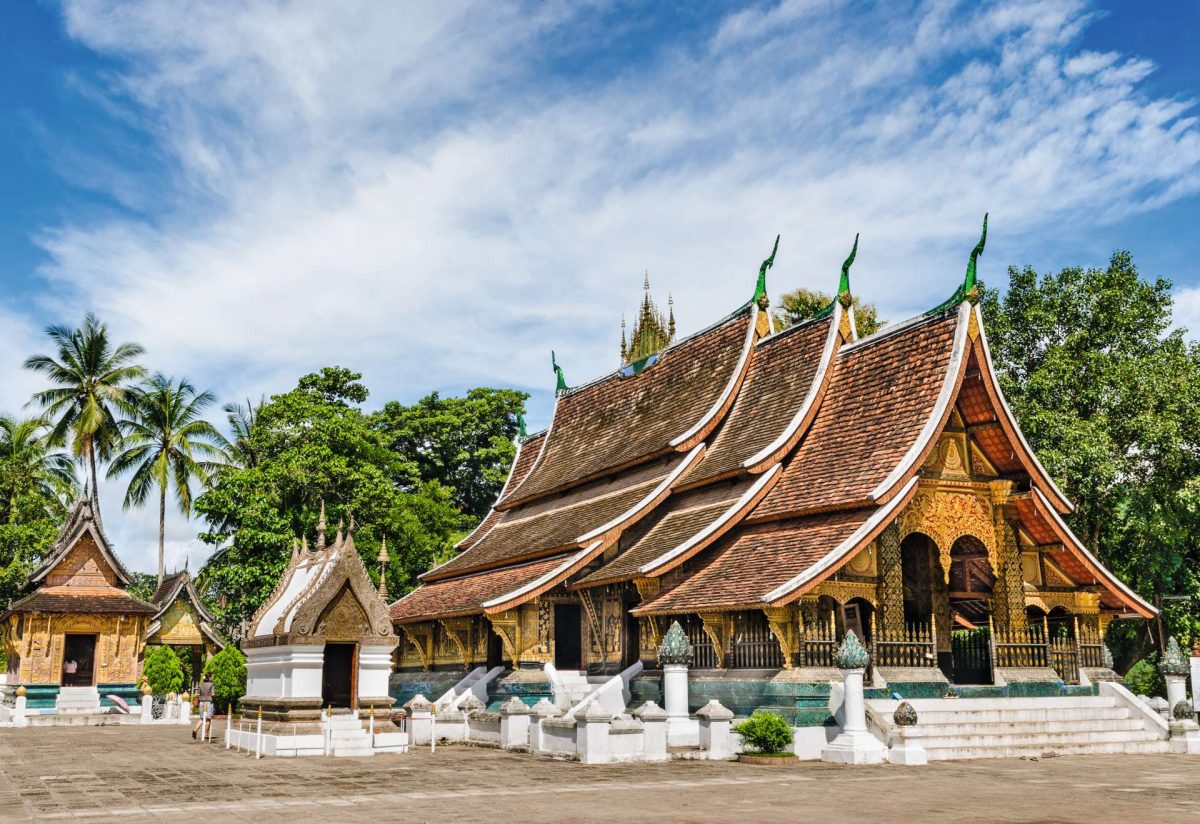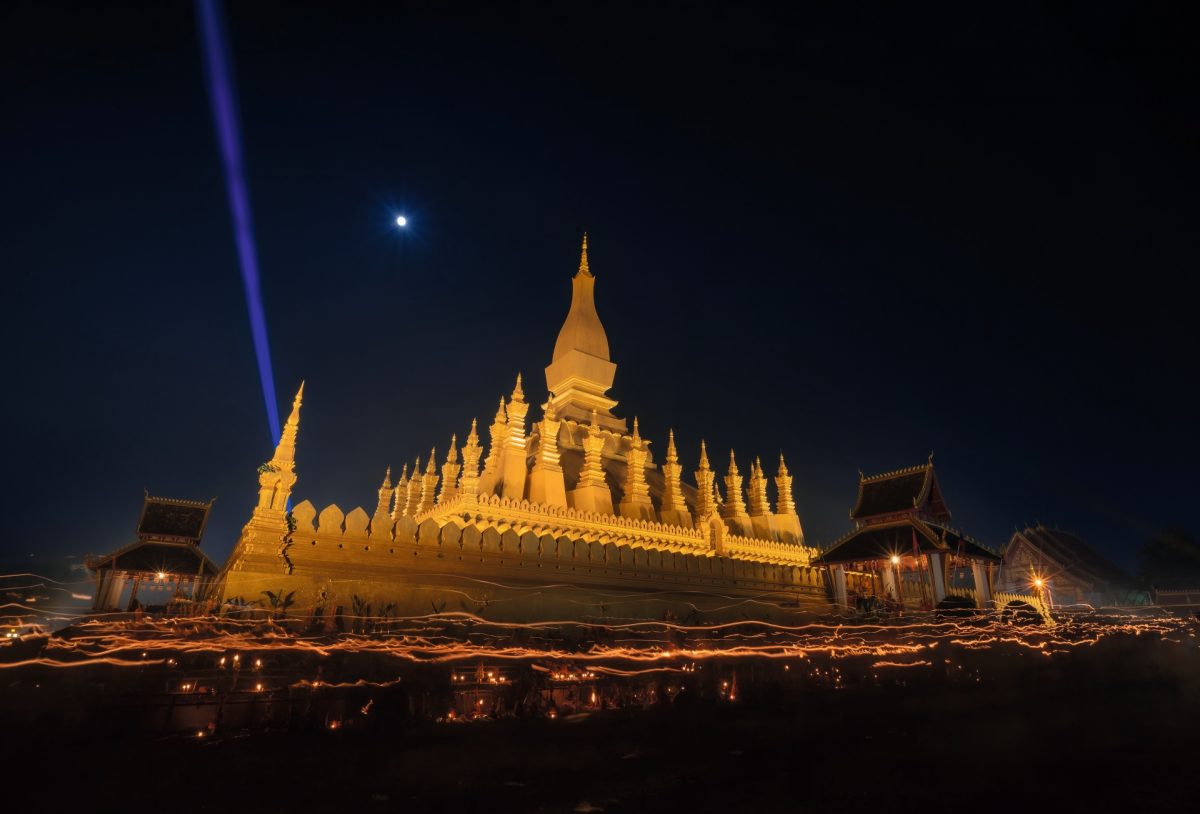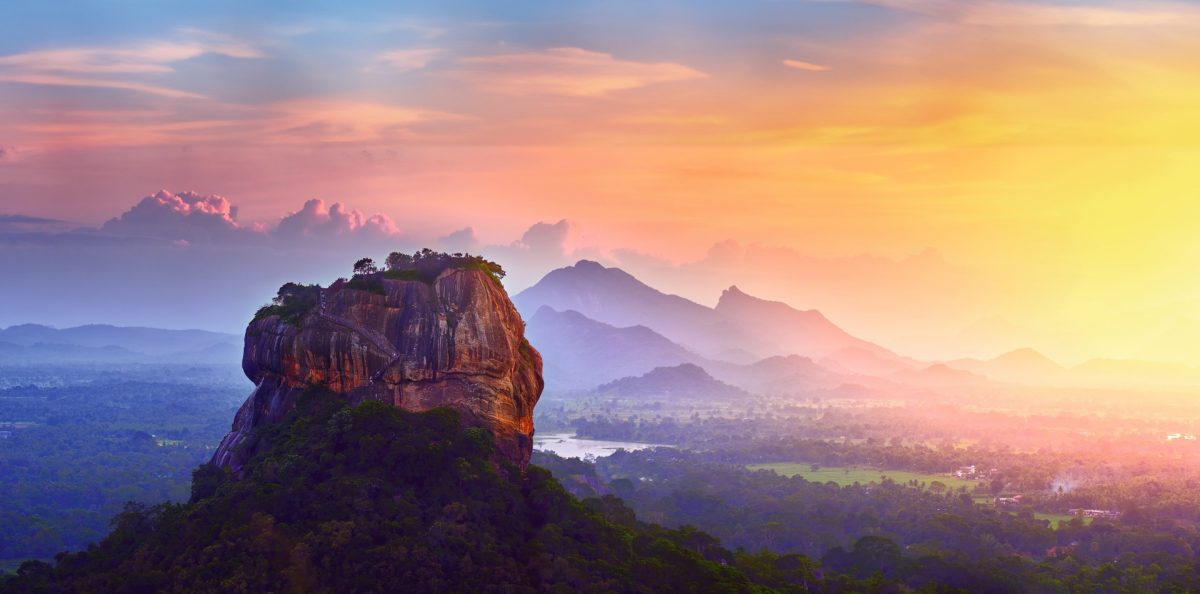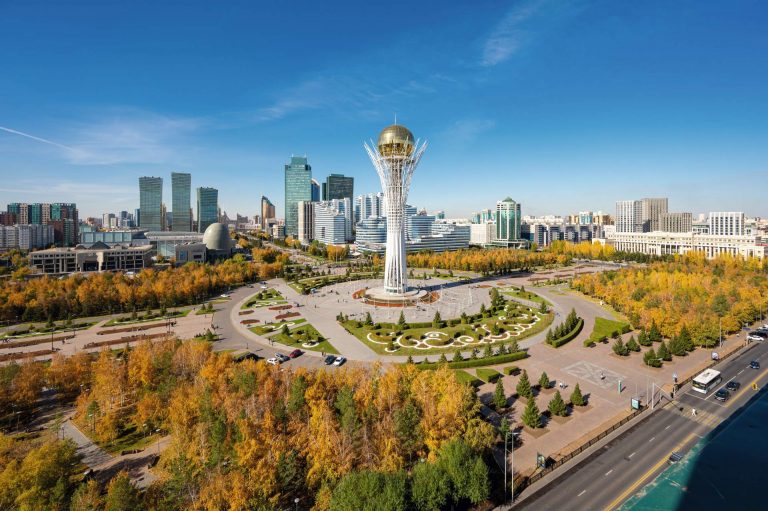Nicholas Roerich set out on an expedition across Central Asia to seek the mythical spiritual realm of Shambala, yet he never did find it. But the destinations on our list still abound with inspiration, even if they were not on the artist’s itinerary.

Laos: Peak of the Golden Triangle
The land of Laos, sandwiched between its neighboring countries and forming part of the opium trade’s infamous Golden Triangle, has repeatedly become a battlefield where the powers of Indochina and beyond vied for control. Against all odds, however, the Lao people have managed to preserve their striking cultural monuments, their sense of humor, and their sublime composure in the face of any and all life’s challenges.
In the center of its capital, Vientiane, which hugs the banks of the mud-red River Mekong, stands the 45-meter-high Pha That Luang Buddhist stupa. Dazzling in the most literal sense of the word, this reliquary resembles the gilded scepter of a mighty deity. Chronicles say that it contains a breastbone fragment of the Buddha himself, brought over from India.

In the pastoral northeast of Laos, near the tiny town of Phonsavan, lies the mystical Plain of Jars, where, across a terrain spanning more than a thousand square kilometers, thousands of enormous stone vessels lie scattered, as if dropped here by a giant. They rise out of the earth like megaliths or the fossilized soup bowls of ancient aliens. But in fact, the jars were hewn from sandstone and granite two millennia ago and were used as tombs for the nobility.
Yet the foremost tourist site of Laos is Luang Prabang, a city drowning in tropical greenery. Its streets are drenched in the fragrance of incense that streams from roadside altars, and stately processions of monks are a common sight here. Luang Prabang’s most beautiful and ancient sanctuary, Wat Xieng Thong, was built back in the mid-16th century. Covered with intricate, feather-light carvings, the sanctuary’s pillars support steep, many-tiered wing-shaped roofs that are adorned with depictions of Chofahs, mythical hybrids serpent-bird hybrids, meant to ward off evil spirits.
Sri Lanka: the Magic of Ceylon
Few people know that Rajarata, Ceylon’s Land of Kings, used to thrive on this island a long time ago. Its surviving heritage includes the ruins of majestic temples and imposing palaces, grandiose reservoirs, and stunning art objects. All of the most important artefacts are concentrated in three ancient cities: Anuradhapura, Polonnaruwa, and Kandy.

In Anuradhapura, which spans the north of the island, you can admire the highly revered Sri Maha Bodhi ficus, safeguarded behind a gilded fence. According to legend, it grew from a small offshoot of the sacred bodhi from India, the very same tree under which the Buddha himself attained enlightenment! Many massive dagobas — stupas, or Buddhist reliquaries — have been preserved in this city. Among the most impressive, is Abhayagiri, adorned with precious metals. Some claim that its “inverted bell” was built over the Buddha’s footprint soon after one of his visits to Ceylon. Equally striking is the enormous Jetavana, a brick structure dating back as early as the 3rd century BC.
The ancient Polonnaruwa has many interesting features, including one of the largest man-made lakes in the world, and countless ruins of palaces and temples. Two sites are of particular note: the “stone book” of Gal Potha — the 25-ton Palm Manuscript, covered in ancient inscriptions — as well as Gal Vihara, a quartet of immense Buddha statues chiseled out of solid rock surface.
The ruins of the Sigiriya rock fortress are renowned for housing one of Asia’s most significant collections of cave paintings. As for the city of Kandy, the capital of Sri Lanka’s central highlands, tourists come here for Sri Dalada Maligawa, or the Temple of the Buddha’s Sacred Tooth Relic.

Bhutan: Come to Stay
In the exotic land of the Thunder Dragon, the only surviving Himalayan kingdom, the national wealth is the people’s happiness.
The country’s main city, Thimphu, spreads along picturesque mountain valley like a thin streak of paint. The atmosphere here is utterly relaxed, even provincial. Tourists are usually shown the Memorial Chorten (the local term for a stupa temple) and the National Library, which houses valuable Buddhist sutras, as well as the Textile Museum with a collection of traditional Bhutanese garments, and the College of Zorig Chusum, which showcases Bhutan’s 13 national handicrafts. The main attraction here is the Fortress of Blessed Religion, Tashichho Dzong.

Another must-see on the itinerary is the vast valley of Paro. It is here, at over 3000 meters above the sea level, that you will find Bhutan’s most famous Buddhist monastery, the sacred Paro Taksang Lhakhang, or the Tigress’s Nest. It is believed that Guru Rinpoche flew to this place on the back of his wife, who had transformed into a tigress, and meditated in the cave for three months. For a long time, the monastery remained inaccessible to foreigners, but now it is open, and perhaps a two-hour climb up the mountain will become your own journey of self-discovery.
Photo: Shutterstock.com


